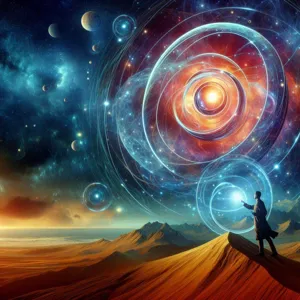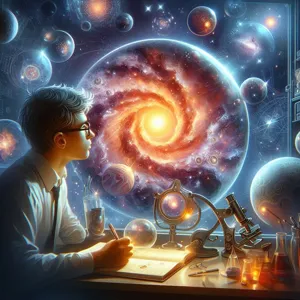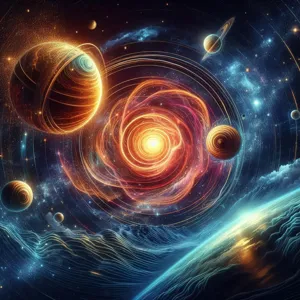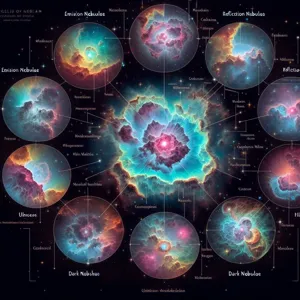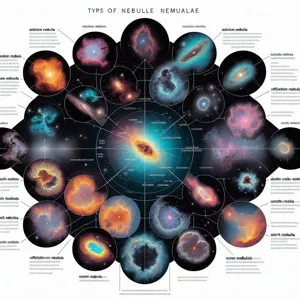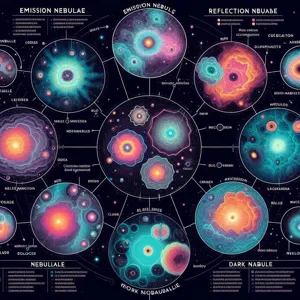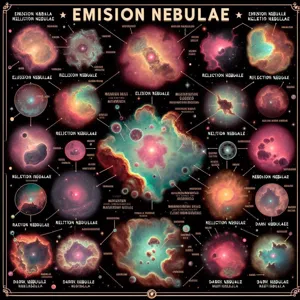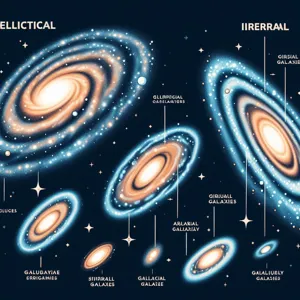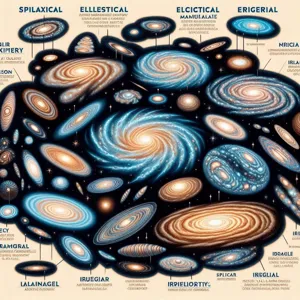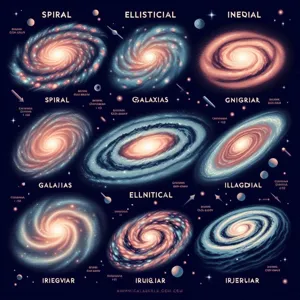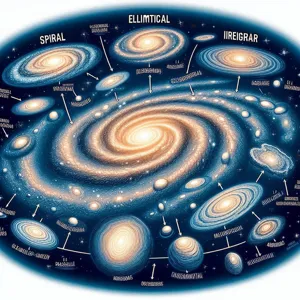The vastness of the universe has always captivated the human imagination, with its shimmering stars, swirling nebulae, and the intricate dance of galaxies.
But how do astronomers peel back the layers of this cosmic tapestry to understand the very processes that give rise to these majestic structures? In “Unveiling the Cosmos: How Astronomers Study Galaxy Formation,” we embark on a journey through the methodologies and technologies that illuminate the mysteries of galaxy formation. From powerful telescopes that capture light from billions of years ago to sophisticated simulations that model the complexities of cosmic evolution, this blog post will explore the cutting-edge techniques and groundbreaking discoveries that are reshaping our understanding of the universe. Join us as we delve into the science behind these magnificent celestial bodies and the relentless pursuit of knowledge that drives astronomers to uncover the secrets of the cosmos.
1. Introduction to Galaxy Formation

In the vast tapestry of the universe, galaxies are the grand structures that house billions of stars, planets, and cosmic wonders. Understanding galaxy formation is not merely an academic pursuit; it offers profound insights into the very nature of our cosmos and our place within it. As we gaze into the night sky, each twinkling light represents a galaxy, a swirling mass of gas, dust, and stellar objects, each with its own unique story of origin and evolution.
The study of galaxy formation delves into the fundamental processes that led to their inception shortly after the Big bang, approximately 13.8 billion years ago. Scientists believe that galaxies formed from small fluctuations in density within the primordial gas that filled the early universe. Over time, gravity pulled these denser regions together, leading to the birth of stars and, eventually, the complex structures we observe today.
Astronomers employ a variety of tools and methodologies to unravel the mysteries of galaxy formation. From powerful telescopes capturing light from distant galaxies, to advanced computer simulations that model cosmic evolution, the quest to understand how galaxies came into being is a multi-faceted endeavor. Observations of cosmic microwave background radiation, the remnants of the Big Bang, and the distribution of galaxies across the universe provide crucial evidence for theoretical models.
As we embark on this journey of discovery, we will explore the key processes involved in galaxy formation, the types of galaxies that exist, and the groundbreaking techniques astronomers use to study their origins. Join us as we unveil the cosmos and deepen our understanding of the magnificent galaxies that adorn our universe.
2. The Basics of Cosmology
Cosmology, the scientific study of the universe’s origin, evolution, and eventual fate, serves as the foundation for understanding galaxy formation. At its core, cosmology delves into the fundamental questions about how the universe came to be, its structure, and the forces that govern its behavior. To grasp the intricacies of galaxy formation, one must first appreciate the basic principles that define cosmological research.
The Big Bang theory is a cornerstone of modern cosmology, positing that the universe began as an incredibly hot, dense point approximately 13.8 billion years ago. From this singularity, it rapidly expanded, cooling over time to allow the formation of subatomic particles, atoms, and eventually, the first stars and galaxies. This explosive birth of the universe set the stage for the complex dance of gravitational and electromagnetic forces that would shape cosmic structures.
Cosmologists utilize various tools and methodologies to explore the universe’s past and present. Observational astronomy, for instance, relies on advanced telescopes and instruments that capture light from distant galaxies, allowing scientists to analyze their composition, motion, and distance. This data reveals vital information about how galaxies form and evolve over billions of years.
In addition to observations, theoretical models play a crucial role in cosmology. Scientists employ mathematical frameworks, such as the Lambda Cold Dark Matter (ΛCDM) model, to simulate cosmic events and predict how galaxies interact and merge over time. These models incorporate the effects of dark matter and dark energy, mysterious components that influence the universe’s expansion and the formation of large-scale structures.
As cosmology continues to evolve, advancements in technology and observational techniques pave the way for new discoveries. From the study of cosmic microwave background radiation, which provides a snapshot of the universe just 380,000 years after the Big Bang, to the mapping of galaxy distributions across vast cosmic distances, cosmologists strive to unravel the mysteries of galaxy formation and the broader universe. Understanding these basics not only enriches our knowledge of the cosmos but also fuels our innate curiosity about our place within it.
3. Historical Perspectives on Galaxy Formation

The study of galaxy formation has evolved dramatically over the centuries, shaped by advancements in technology and a deeper understanding of the universe. Early astronomers, such as Galileo and Kepler, laid the groundwork for celestial observation with their rudimentary telescopes, allowing them to glimpse the vastness of the cosmos. However, it wasn’t until the 20th century that the field truly began to flourish, driven by the advent of more powerful telescopes and the realization that galaxies are not static entities but dynamic systems undergoing constant change.
One of the pivotal moments in the history of galaxy formation studies came with Edwin Hubble’s groundbreaking work in the 1920s. Hubble’s observations led to the classification of galaxies based on their shapes and sizes, establishing the now-familiar Hubble Sequence. His discovery of the redshift-distance relationship revealed that galaxies are moving away from us, suggesting the universe is expanding. This monumental finding not only reshaped our understanding of the cosmos but also set the stage for various theories regarding galaxy formation and evolution.
As the decades progressed, theoretical frameworks such as the Big Bang theory emerged, providing a cosmological context for understanding how galaxies formed from primordial fluctuations in density. The development of computer simulations in the late 20th century allowed astronomers to model the complex processes involved in galaxy formation, including the role of dark matter, gas dynamics, and gravitational interactions. These simulations have offered invaluable insights into how galaxies like our Milky Way may have evolved over billions of years.
In recent years, the launch of advanced observatories, such as the Hubble Space Telescope and the upcoming James webb Space Telescope, has opened up new avenues for exploration. These instruments have allowed astronomers to peer deeper into the universe than ever before, capturing images of distant galaxies in various stages of formation. By analyzing the light from these galaxies, researchers can glean information about their composition, age, and the conditions present during their formation.
As we continue to unveil the mysteries of galaxy formation, it becomes clear that this field of study is an intricate tapestry woven from historical observations, theoretical advancements, and cutting-edge technology. Each discovery adds a new thread, enriching our understanding of how these magnificent structures came to be and their role in the broader narrative of the universe.
4. The Role of Dark Matter
Dark matter, a mysterious and elusive substance, plays a pivotal role in the formation and evolution of galaxies, influencing their structure and behavior in profound ways. Despite making up about 27% of the universe’s total mass-energy content, dark matter cannot be seen directly; it does not emit, absorb, or reflect light. Instead, astronomers detect its presence through its gravitational effects on visible matter and the cosmic microwave background.
As galaxies begin to form, dark matter acts as the scaffolding upon which visible matter—such as stars, gas, and dust—can accumulate. This occurs within vast halos of dark matter that envelop galaxies, providing the necessary gravitational pull to attract regular matter. These halos are not uniform; they vary in size and density, shaping the galaxies that emerge within them. Through sophisticated simulations and observations, astronomers have determined that the distribution of dark matter significantly influences the types of galaxies that form, their shapes, and their clustering in the vast cosmic web.
Furthermore, the interplay between dark matter and baryonic (normal) matter is crucial during the early stages of galaxy formation. As gas falls into the potential wells created by dark matter, it heats up and can trigger star formation. Understanding how dark matter interacts with this baryonic matter is essential for deciphering the processes that lead to the diverse range of galaxies we observe today, from spiral galaxies with their elegant arms to the more chaotic structure of elliptical galaxies.
Recent advancements in technology, such as powerful telescopes and sensitive detectors, have allowed astronomers to map dark matter in unprecedented detail, revealing its distribution and dynamics across different cosmic epochs. As researchers continue to unravel the complexities of dark matter, they inch closer to a comprehensive understanding of not only galaxy formation but the very nature of the universe itself. Through these efforts, we gain insight into the invisible forces that shape our cosmos, reminding us that much of the universe remains shrouded in mystery, just waiting to be unveiled.
5. Observational Techniques: Telescopes and Instruments
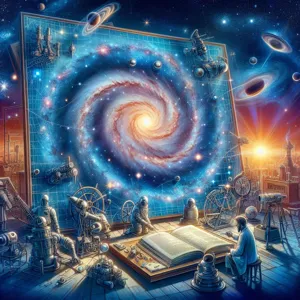
Observational Techniques: Telescopes and Instruments
The journey to unravel the mysteries of galaxy formation begins with the remarkable tools that astronomers wield—telescopes and specialized instruments that allow us to peer deep into the cosmos. These advanced technologies have evolved significantly over the years, transforming our understanding of the universe.
At the forefront of astronomical observation are optical telescopes, which capture visible light emitted by celestial bodies. These ground-based giants, like the Keck Observatory in Hawaii and the Very Large Telescope in Chile, boast intricate mirror systems that gather light from distant galaxies, enabling astronomers to study their structure and dynamics in stunning detail. However, even the most powerful optical telescopes have limitations; they can be hampered by Earth’s atmosphere, which distorts the light from distant stars and galaxies. To combat this, many observatories are now utilizing adaptive optics systems that correct for atmospheric interference in real time, providing clearer images than ever before.
But the universe is not merely a canvas of visible light. To gain a comprehensive understanding of galaxy formation, astronomers employ a wide array of observational techniques that extend beyond the optical spectrum. Radio telescopes, like the Arecibo Observatory (now decommissioned) and the Atacama Large Millimeter/submillimeter Array (ALMA), capture the radio waves emitted by celestial objects. This allows researchers to study the cold gas clouds that serve as the building blocks for star formation and the intricate interplay between galaxies.
Moreover, the advent of space-based telescopes, such as the Hubble Space Telescope and the upcoming James Webb Space Telescope, has revolutionized our ability to observe the universe free from atmospheric distortion. These telescopes utilize infrared and ultraviolet wavelengths, providing insights into the formation of the earliest galaxies and the processes that drive their evolution. By capturing images of galaxies as they were billions of years ago, astronomers can piece together the complex history of our universe and understand how galaxies coalesced from primordial gas and dust.
In addition to traditional telescopes, astronomers utilize spectrographs to analyze the light emitted by galaxies. This technique allows them to determine the composition, temperature, and velocity of distant objects, revealing critical information about their formation and evolution. By studying the light spectrum, astronomers can identify the presence of various elements, track the movement of galaxies, and even measure the expansion of the universe itself.
Together, these observational techniques form a powerful toolkit that enables astronomers to unlock the secrets of galaxy formation. With each new discovery, we inch closer to understanding not just how galaxies are born, but also our place within this vast and awe-inspiring cosmos. As technology continues to advance, the potential for groundbreaking discoveries in the field of astronomy remains limitless, promising to unveil even more of the universe’s mysteries in the years to come.
6. The Importance of Spectroscopy
Spectroscopy plays a pivotal role in the study of galaxy formation, acting as a powerful tool that allows astronomers to unravel the complex processes that shape our universe. By analyzing the light emitted or absorbed by celestial objects, scientists can glean vital information about their composition, temperature, motion, and even the presence of dark matter.
When light from a galaxy is dispersed through a prism or diffraction grating, it reveals a unique spectrum—a distinct fingerprint that indicates the elements present within that galaxy. Each element absorbs and emits light at specific wavelengths, creating patterns of lines that reveal the chemical makeup of stars and gas clouds. This analysis not only helps astronomers identify the elements involved in star formation, such as hydrogen and helium but also provides insights into the physical conditions and processes occurring within these distant systems.
Moreover, spectroscopy allows astronomers to measure the redshift of galaxies, which is crucial for understanding their motion and distance from Earth. By observing how the wavelengths of light stretch as galaxies move away from us, astronomers can calculate their speed and track the expansion of the universe. This method of measurement has been fundamental in confirming theories regarding cosmic expansion and the formation of large-scale structures in the universe.
In addition to revealing the basic building blocks of galaxies, spectroscopy can also shed light on their evolutionary history. By examining the light from different regions of a galaxy, scientists can determine how star formation rates have changed over time and identify interactions with neighboring galaxies that may have influenced their development.
In essence, spectroscopy is not just a tool; it is a gateway into the past and present of the cosmos, enabling astronomers to piece together the intricate tapestry of galaxy formation and evolution. Through its application, we gain a deeper understanding of not only our own galaxy, the Milky Way, but also the vast array of galaxies that populate the universe, each with its own unique story waiting to be told.
7. Simulations and Models in Astronomy
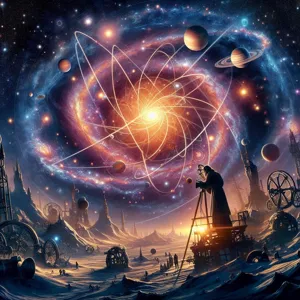
In the quest to understand galaxy formation, astronomers have turned to simulations and models as indispensable tools. These sophisticated computational frameworks allow researchers to mimic the complex processes that govern the birth and evolution of galaxies, offering a virtual playground for testing theories and scrutinizing observational data.
At the heart of these simulations lies the fundamental physics of gravity, gas dynamics, and dark matter interactions. By inputting initial conditions that reflect the state of the universe shortly after the Big Bang, scientists can observe how primordial gas clouds collapse under their own gravity, forming the first stars and galaxies. High-resolution simulations, like those run on supercomputers, create breathtaking visualizations that illustrate how these structures evolve over billions of years, capturing intricate details such as star formation rates, chemical enrichment, and the merging of galaxies.
One of the most significant advancements in this field has been the development of cosmological simulations, which take into account the large-scale structure of the universe. These models help astronomers understand how galaxies are distributed across cosmic voids and filaments, providing insight into the role of dark matter and its influence on galaxy formation. By comparing simulation results with actual observational data from powerful telescopes, researchers can refine their models, ensuring they accurately represent the complexities of the universe.
Additionally, machine learning techniques are increasingly being integrated into simulations, enabling astronomers to analyze vast datasets more efficiently. By training algorithms to recognize patterns in the data, researchers can identify the underlying physical processes that contribute to galaxy formation. This synergy between traditional simulations and advanced computational methods is paving the way for new discoveries and a deeper understanding of the cosmos.
In essence, simulations and models are not merely academic exercises; they are crucial for bridging the gap between theoretical predictions and empirical observations. As astronomers continue to enhance their simulations, they inch closer to unveiling the mysteries of galaxy formation, helping us piece together the grand tapestry of the universe’s evolution.
8. Key Discoveries in Galaxy Formation
The journey to understanding galaxy formation has been paved with groundbreaking discoveries that have reshaped our comprehension of the universe. One of the most significant breakthroughs came with the advent of powerful telescopes and advanced imaging technologies, which allowed astronomers to peer deeper into the cosmos than ever before.
One key discovery is the realization that galaxies do not form in isolation but rather through a complex interplay of gravitational forces and cosmic mergers. Observations from the Hubble Space Telescope have revealed a stunning array of galaxies in various stages of formation, showcasing how smaller ‘building block’ galaxies collide and coalesce over billions of years to create the massive structures we see today. This process not only highlights the dynamic nature of the universe but also provides insights into the role dark matter plays in galaxy formation.
Moreover, the discovery of the Cosmic Microwave Background Radiation (CMB) has been pivotal. This remnant radiation from the Big Bang offers a snapshot of the early universe, allowing astronomers to understand the conditions that led to galaxy formation. The slight anisotropies in the CMB data have helped scientists map the distribution of matter in the universe and model how galaxies evolved over time.
Another remarkable finding is the impact of supermassive black holes at the centers of galaxies. Research indicates that these colossal entities not only affect their immediate surroundings but also play a crucial role in the growth and development of the host galaxy itself. The feedback mechanisms from active galactic nuclei can regulate star formation rates, leading to a delicate balance in the life cycle of galaxies.
These discoveries, coupled with computer simulations and theoretical models, have unveiled a more comprehensive picture of how galaxies are born, grow, and ultimately evolve. As technology continues to advance, astronomers are poised to unravel even more mysteries of the cosmos, bringing us closer to understanding the intricate tapestry of galaxy formation that has shaped our universe.
9. The Influence of Gravity and Gas Dynamics
Gravity and gas dynamics are pivotal forces in the grand narrative of galaxy formation, acting as both sculptors and architects of the cosmos. At the heart of this intricate dance lies gravity, the universal force that draws matter together, shaping the structure of the universe. From the moment of the Big Bang, gravity began its relentless pull, aggregating gas and dust into the first clumps that would eventually form stars and galaxies. As these early structures formed, they began to exert their own gravitational influence, creating a feedback loop that further accelerated the formation of larger and more complex systems.
Gas dynamics plays a crucial role alongside gravity in this cosmic ballet. The primordial gas, primarily hydrogen and helium, flows and interacts under the influence of gravitational fields, leading to a variety of phenomena that dictate how galaxies evolve. When gas clouds reach a particular density, they collapse under their own weight, triggering the birth of new stars. This process, known as star formation, is not just a solitary event; it can trigger shock waves that compress surrounding gas, leading to additional star formation in a cascading effect.
Moreover, the interplay of gravity and gas dynamics is evident in the spiral arms of galaxies. As gas and stars orbit around the galactic center, gravitational interactions create density waves that organize the gas into distinct regions of star formation, resulting in the stunning spiral patterns we observe in many galaxies today. These gravitational influences are not static; they fluctuate over time, influenced by the galaxy’s mass, rotation, and interactions with neighboring galaxies.
Astronomers harness advanced simulations and observational tools to explore these complex interactions. By studying the movement of stars and gas within galaxies, they gain insights into the underlying gravitational forces at play. Additionally, by observing distant galaxies, they can infer how these dynamics have shaped the universe over billions of years.
In essence, gravity and gas dynamics are not merely components of galaxy formation; they are the heartbeat of the cosmos itself, driving the evolution of galaxies and illuminating the intricate tapestry of the universe. Understanding these forces deepens our appreciation for the magnificence of galaxies and their role in the ever-expanding universe.
10. The Lifecycle of Galaxies
The lifecycle of galaxies is a captivating saga that unfolds over billions of years, marked by a series of transformative stages that shape their structure, composition, and fate. Understanding this lifecycle is crucial for astronomers as they piece together the history of our universe and its evolution.
It begins with the formation of galaxies, where vast clouds of gas and dust collapse under their own gravity, igniting nuclear fusion in the cores of newborn stars. This initial stage, often referred to as the “protogalaxy” phase, sets the stage for a rich tapestry of stellar and galactic development. During this time, galaxies may form in isolation or merge with others, leading to the creation of larger structures known as galaxy clusters.
As galaxies mature, they enter a phase dominated by star formation, giving rise to vibrant, luminous regions filled with young, hot stars. This phase is characterized by the presence of massive star clusters, nebulae, and the intricate dance of stellar winds and supernova explosions that enrich the surrounding material with heavier elements. Over time, however, star formation begins to slow down, leading to what astronomers call the “quiescent” phase of a galaxy’s life, where older stars dominate the landscape.
Eventually, galaxies may enter the so-called “passive” phase, where star formation has nearly ceased, and the galaxy evolves primarily through internal processes and interactions with other galaxies. During this phase, galactic interactions—such as mergers, tidal forces, and gravitational encounters—play a significant role in reshaping the galaxy’s structure. These interactions can trigger new waves of star formation or lead to the stripping of gas and stars, altering the galaxy’s appearance and composition.
Finally, galaxies can approach the end of their lifecycle, often transitioning into what is known as a “dormant” state. In this phase, galaxies become increasingly red and dead, dominated by older stars, with little to no new star formation occurring. The remnants of their once-vibrant activity may include supermassive black holes at their centers, which can influence their surroundings in profound ways.
The lifecycle of galaxies is not linear; it is a complex interplay of physical processes and environmental factors that vary from one galaxy to another. By studying the different stages of galaxy formation and evolution, astronomers gain invaluable insights into the fundamental forces that have shaped our universe, helping us understand not just the cosmos, but our place within it. Through telescopes and advanced simulations, researchers unravel the intricate history of galaxies, revealing a universe that is dynamic, ever-changing, and full of wonder.
11. The Role of Supermassive Black Holes
Supermassive black holes (SMBHs) are among the most enigmatic and powerful entities in the universe, playing a crucial role in the study of galaxy formation. found at the centers of nearly every large galaxy, these colossal black holes can contain masses equivalent to billions of suns, exerting an immense gravitational influence on their surroundings. Understanding their formation and evolution is essential for astronomers seeking to unravel the mysteries of how galaxies develop over cosmic time.
The connection between supermassive black holes and galaxies is a complex and fascinating one. As galaxies form from clouds of gas and dark matter, the matter spirals inward, driven by gravity. This process can lead to the creation of a black hole at the galaxy’s core. But the relationship doesn’t end there; these black holes can actively shape the evolution of their host galaxies. As they consume surrounding matter, they release vast amounts of energy in the form of light and radiation, often seen as quasar emissions. This energy can heat the surrounding gas, preventing it from cooling and forming new stars, thereby influencing the rate of star formation in the galaxy.
Moreover, astronomers have identified a correlation between the mass of a supermassive black hole and the properties of its host galaxy, such as the mass of the stars within it. This correlation, known as the M-sigma relation, suggests a co-evolutionary process between galaxies and their central black holes. By studying this relationship, researchers can gain insights into the conditions that led to the formation of both the galaxy and its central SMBH.
As telescopes and observational technologies continue to advance, astronomers are uncovering new details about the formation and growth of supermassive black holes. Observations from facilities like the Event Horizon Telescope, which captured the first image of a black hole’s event horizon, and various space observatories studying gravitational waves are shedding light on the dynamics of these massive objects. Understanding the role of supermassive black holes in galaxy formation not only deepens our comprehension of the universe’s history but also challenges our theories about the fundamental processes that govern cosmic structure and evolution.
12. Recent Advances in Astronomy and Technology
In the ever-evolving field of astronomy, recent advances in technology are reshaping our understanding of galaxy formation and the cosmos at large. From ground-breaking telescopes capable of peering deeper into the universe than ever before, to sophisticated computer simulations that model cosmic events, the tools at astronomers’ disposal are revolutionizing our exploration of the universe.
One of the most significant strides has been the development of the James Webb Space Telescope (JWST), which launched in December 2021. With its powerful infrared capabilities, JWST allows astronomers to observe galaxies that formed just a few hundred million years after the Big Bang. This unprecedented view offers insights into the early stages of galaxy formation, providing a clearer picture of how these cosmic structures evolved over time. The telescope’s ability to capture light from the most distant objects in the universe is shedding light on the processes that govern galaxy assembly, star formation, and the interplay between dark matter and ordinary matter.
In addition to the JWST, advancements in ground-based observatories, such as the Extremely Large Telescope (ELT) currently under construction in Chile, promise to enhance our observational capacity even further. With its immense aperture, the ELT will enable astronomers to capture high-resolution images of distant galaxies, revealing intricate details about their composition and structure. These observations are essential for testing existing theories of galaxy formation and for developing new models that incorporate the complexities of cosmic evolution.
Furthermore, the integration of artificial intelligence (AI) and machine learning into astronomical research is allowing scientists to analyze vast amounts of data with unprecedented speed and accuracy. AI algorithms can identify galaxy formations in massive datasets, helping researchers pinpoint patterns and anomalies that may have been overlooked. This technological synergy not only accelerates discoveries but also opens new avenues for understanding the dynamics of galaxies and their environments.
As astronomers continue to harness these cutting-edge technologies, the quest to unveil the mysteries of galaxy formation is entering a new era. The synergy between advanced observational tools and innovative analytical techniques promises to deepen our understanding of the universe, revealing the intricate processes that have shaped the galaxies we see today and those yet to be discovered. With each advance, we move closer to answering fundamental questions about our cosmic origins and the forces that govern the vast expanse of space.
13. Case Studies: Notable Galaxies and Their Formation
When it comes to understanding galaxy formation, case studies of notable galaxies serve as valuable windows into the cosmic processes that have shaped our universe. Each galaxy possesses unique characteristics that reflect its history, environment, and the dynamic forces at play during its formation. Here, we delve into a few remarkable examples that illuminate the complexities of galaxy evolution.
One of the most studied galaxies is the **Milky Way**, our cosmic home. This spiral galaxy, with its well-defined arms swirling around a central bulge, showcases a blend of older and younger stars, revealing a rich history of star formation events. Astronomers have traced the Milky Way’s formation back to over 13 billion years ago, identifying the merger of smaller protogalaxies that contributed to its growth. By analyzing the chemical composition of stars, researchers can infer the processes of nucleosynthesis and the types of supernovae that enriched the interstellar medium, leading to the vibrant tapestry of stellar populations we observe today.
In contrast, the **Andromeda Galaxy**, the nearest spiral galaxy to the Milky Way, offers insights into the future of galactic interactions. Currently on a collision course with our galaxy, Andromeda is a prime example of how galactic mergers can fuel star formation. Observations have revealed that as these two massive galaxies approach, their gravitational forces will stir up gas clouds, igniting stellar nurseries in a spectacular display of cosmic fireworks. Studying Andromeda not only enhances our understanding of galactic evolution but also provides clues about the eventual fate of our own galaxy.
Another fascinating case is the **Hubble’s Deep Field**, a region of space captured in a long exposure by the Hubble Space Telescope. This seemingly empty patch of sky revealed thousands of distant galaxies, many of which are in various stages of formation. Some of these galaxies appear irregular and chaotic, indicating rapid star formation and interactions with neighboring galaxies. The diversity observed in these distant galaxies offers a glimpse into the early universe, allowing astronomers to piece together the timeline of galaxy formation and the environmental conditions that fostered their growth.
Finally, we cannot overlook the **Triangulum Galaxy (M33)**, another member of our Local Group. This spiral galaxy is less massive than the Milky Way, yet it boasts a rich history of star formation, which astronomers study to understand how smaller galaxies evolve. Its proximity allows for detailed observations of its star clusters and nebulae, revealing the processes that govern star birth and the effects of galactic interactions with its larger neighbors.
These case studies not only highlight the myriad paths of galaxy formation but also underscore the importance of observational astronomy in unraveling the mysteries of the cosmos. As technology advances, astronomers continue to refine their methods, promising even deeper insights into the formation and evolution of galaxies across the universe. Through these explorations, we gain a greater appreciation for the vast and intricate web of cosmic history that connects us all.
14. The Future of Galaxy Research
The future of galaxy research promises to be an exhilarating journey, fueled by technological advancements and an ever-deepening understanding of the universe. As astronomers continue to refine their observational techniques, the next generation of telescopes and instruments will play a pivotal role in unraveling the mysteries surrounding galaxy formation.
One of the most anticipated developments is the launch of the James Webb Space Telescope (JWST), which is set to revolutionize our view of the cosmos. With its unprecedented infrared capabilities, JWST will allow researchers to peer further back in time, capturing the light from the earliest galaxies that formed just moments after the Big Bang. This will provide invaluable insights into the conditions that led to galaxy formation and evolution, enabling astronomers to test existing theories and perhaps even discover new ones.
Furthermore, advancements in computer simulations and modeling are enhancing our ability to understand complex cosmic phenomena. By simulating the interactions and dynamics of dark matter, gas, and stars, scientists can create detailed models of galaxy formation that align with observational data. These simulations will not only help in predicting the fate of galaxies but also in understanding the role of environment and cosmic events, such as mergers and collisions, in shaping galaxy structures.
The integration of artificial intelligence (AI) and machine learning technologies into astronomical research is another exciting frontier. These tools can analyze massive datasets, identifying patterns and anomalies that might go unnoticed by human eyes. This capability will accelerate the discovery of new galaxies and their characteristics, allowing astronomers to classify and catalog them with unprecedented speed and accuracy.
As we look to the stars, the collaborative efforts of international research teams and advancements in multi-messenger astronomy—combining observations from electromagnetic radiation, gravitational waves, and neutrinos—are paving the way for a more holistic understanding of galaxy formation. This interdisciplinary approach promises to unlock the synergies between various cosmic phenomena and enhance our overall comprehension of the universe’s evolution.
In summary, the future of galaxy research is not just about looking back at what has already formed; it is also about setting the groundwork for understanding the universe’s ongoing evolution. With innovative tools and a collaborative spirit, astronomers are poised to unveil deeper cosmic truths, illuminating the intricate tapestry of galaxies that make up our universe and reshaping our understanding of the cosmos itself.
15. Conclusion: Understanding Our Place in the Universe
In conclusion, the study of galaxy formation not only reveals the intricate processes that shaped the cosmos but also deepens our understanding of our own existence within it. Throughout this exploration, we have uncovered the remarkable journey of gas clouds collapsing under their own gravity, the interplay of dark matter, and the role of supernovae in triggering star formation. Each discovery adds a brushstroke to the vast, cosmic canvas, illustrating how galaxies evolve over billions of years.
As we peer into the depths of space, we are reminded of our humble beginnings and the extraordinary journey of the universe itself. The swirling galaxies we observe today are the very same structures that have hosted the birth of stars, planets, and, ultimately, life. With advanced technologies like the James Webb Space Telescope and ongoing research in astrophysics, we are better equipped to unravel the mysteries of galaxy formation and evolution, bringing us one step closer to understanding the fundamental questions of existence.
Ultimately, studying galaxy formation is not just about understanding the cosmos; it’s about understanding our place in it. It inspires curiosity and a sense of wonder as we ponder the vastness of the universe and our connection to it. Each galaxy, with its billions of stars and potentially habitable worlds, serves as a reminder of the infinite possibilities that lie beyond our home planet. In embracing this cosmic perspective, we foster a greater appreciation for the universe and our role within it, igniting a collective desire to explore, discover, and protect the celestial wonders that surround us.
As we conclude our exploration of how astronomers study galaxy formation, we hope you feel inspired by the intricate processes that shape the universe around us. From the breathtaking images captured by powerful telescopes to the sophisticated simulations that unravel the mysteries of cosmic evolution, the journey of understanding galaxies is both a scientific adventure and a testament to human curiosity. The methods and technologies used by astronomers not only deepen our knowledge of the cosmos but also ignite a sense of wonder about our place within it. As we continue to unveil the mysteries of the universe, let us remember that each discovery is a stepping stone toward unlocking the secrets of our celestial origins. Thank you for joining us on this astronomical journey—may it spark your own curiosity about the vast and beautiful cosmos that lies beyond our earthly confines.

